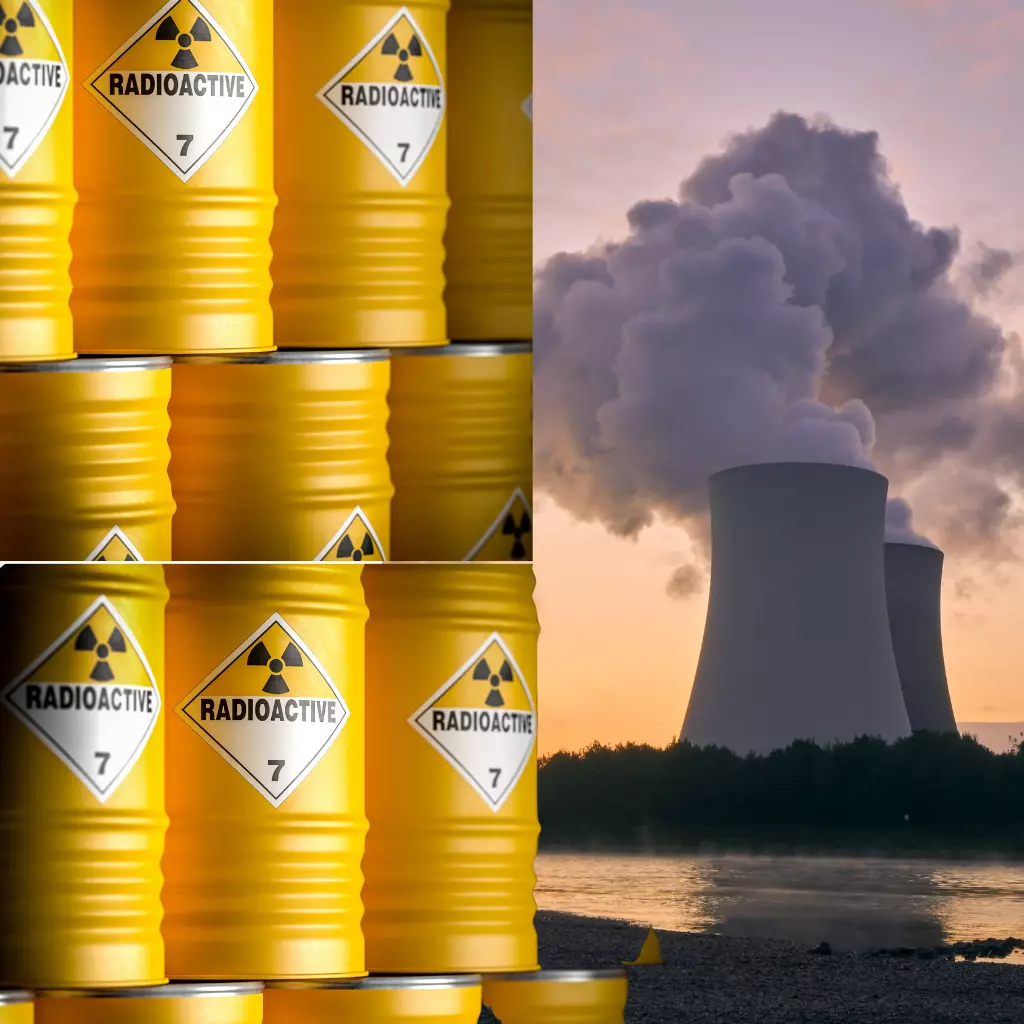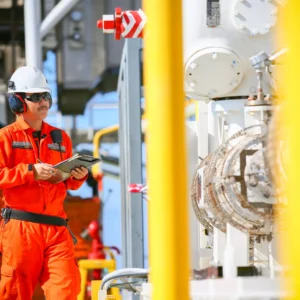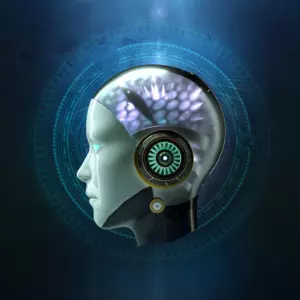
Atomic Intelligence
AI in Nuclear Energy Safety and Management
Emerging technologies such as Artificial Intelligence (AI) are revolutionizing every industry, including nuclear energy.
This innovative AI technology is breathing new life into nuclear energy safety protocols, predictive analytics for plant operations, radiation monitoring, maintenance, and waste management.
Dive into this comprehensive exploration of how AI spearheads safety and effective leadership in the nuclear energy sector and reshapes its future.
We will focus on five crucial aspects where AI confluence is making a significant impact.
Table of Contents
Nuclear Nuances: Safety Protocols Powered by AI
As the use of nuclear technology advances, safety remains a primary concern. Artificial Intelligence (AI) is being incorporated into nuclear safety protocols to mitigate the inherent risks.
AI’s predictive capabilities allow operators to identify and address abnormalities before they become significant issues. By monitoring operational patterns and learning from them, AI can provide alerts for potential anomalies or breaches.
In places like nuclear facilities, where exposure to radioactive materials is a significant concern, limiting human presence is essential. This is where technology can shine and be incredibly helpful. By offering a “second pair of eyes”, AI helps ensure consistent adherence to safety protocols, thus securing the future of nuclear technology.
Expect greater interplay between AI and nuclear safety going forward.
Predicting the Power: AI in Nuclear Operations
AI is increasingly significant in nuclear operations, enhancing safety and efficiency. Such systems offer predictive analysis in handling nuclear data, monitoring, and inspection.
They provide precise predictions about power production and potential threats, enabling preemptive precautions. AI technology can be programmed to observe the behaviours and patterns within a nuclear reaction and predict future behaviours.
It can detect anomalies and malfunctions that can lead to potential accidents, allowing for advanced warning and prevention. Additionally, AI can optimize power generation in nuclear plants, making them more efficient and effective.
This blend of AI and nuclear operations holds great promise for the future of energy production.
Radiation Readings: Machine Learning for Monitoring
The use of machine learning technology in monitoring radiation readings is a notable change! It significantly expedites the processing and analysis of data, making it a potent tool. Machine learning algorithms can perceive patterns and trends within large volumes of data that may be hard to discern otherwise.
This could result in improved detection of radioactive materials and potential leaks. More so, real-time data monitoring and predictive analysis can provide early warning signs, enabling quick remedial actions, which is crucial in radiation management. Proactive surveillance of radiation levels could prevent significant damage or a disaster.
Hence, machine learning and AI have a compelling role in the global quest for safer nuclear radiation practices and management.
Maintenance in the Modern Age: AI in Nuclear Plants
As technology advances, the maintenance field, particularly in nuclear plants, is being revolutionized by Artificial Intelligence (AI). These facilities utilize machine learning algorithms to monitor systems and predict issues before they arise, reducing the number of unexpected shutdowns.
AI improves efficiency and safety by identifying nuanced patterns or deviations that can signify problems much faster and more accurately than humans. AI is helpful for predictive maintenance and plays a vital role in enabling remote inspections, measuring radiation, ensuring compliance, and even simulating nuclear reactions.
These are just a few ways AI is revolutionizing how we approach complex tasks. Its potential to transform industries is genuinely remarkable. Thus, AI is emerging as a potent tool in managing the complex maintenance requirements of nuclear power plants in the modern age.
Waste Not: AI in Efficient Nuclear Waste Management
Managing nuclear waste is a daunting task due to its hazardous nature. However, AI can significantly enhance this process. AI algorithms can analyze and predict the waste’s degradation and potential risks, facilitating safe storage or disposal methods.
Moreover, AI-driven robots can handle waste in environments deemed too dangerous for humans, reducing human exposure while increasing overall efficiency. Predictive analytics can help in the proactive mitigation of risks and failures.
Thus, AI is crucial in securing a safer and more sustainable future by assisting in efficient nuclear waste management.
Reactor Responses: AI in Nuclear Feedback Systems
Reactor Responses in AI-based Nuclear Feedback Systems is a revolutionary facet of nuclear engineering. These systems leverage artificial intelligence’s potential to enhance nuclear reactors’ safety, efficiency, and response times.
AI algorithms are programmed to constantly monitor and analyze essential parameters of the nuclear reactor, such as temperature, pressure, and radiation levels. Based on this data, the AI can predict potential failures, initiate necessary steps to prevent accidents, and ensure optimal performance.
Most importantly, AI can recognize and respond to issues faster than humans, mitigating potential disasters. Therefore, the role of AI in nuclear feedback systems is pivotal in establishing an efficient, reliable, and safer nuclear facility.
Harnessing the Atom: AI's Role in Nuclear Innovation
Harnessing the atom through nuclear innovation is challenging due to safety and complexity issues. However, recent advances in artificial intelligence (AI) are revolutionizing this field, offering new solutions and improvements to complex processes. AI can provide
- predictive analytics for reactor performance and maintenance,
- identifying potential faults before they become critical,
- thus improving safety.
Moreover, AI algorithms can optimize nuclear plant operations, improve the design of nuclear systems, and expedite nuclear waste processing. Using machine learning and simulated environments, AI can help make nuclear energy more efficient, safe, and sustainable.
Stable, Safe, Smart: The New Age of Nuclear Power
The New Age of Nuclear Power, characterized by stability, safety, and intelligence, represents a paradigm shift in clean and renewable energy solutions. Step right into the future with advanced reactors that produce minimal waste and have been ingeniously designed to thwart disastrous meltdowns.
These modern marvels boast top-of-the-line safety features and backup systems, all while harnessing the power of artificial intelligence to maximize efficiency, minimize human error, and predict potential problems.
With continued research in fusion technology for limitless and cleaner energy production, nuclear power is becoming an increasingly attractive option for sustainable energy in the future, challenging the traditional narratives around its risks.
From Atoms to Algorithms: The AI-Nuclear Nexus
The interlinking of artificial intelligence (AI) with nuclear science, known as the AI-Nuclear nexus, facilitates advanced automated algorithms directly impacting the atomic level. AI has rapidly permeated the nuclear industry, aiding in refining nuclear safety, waste management, and materials discovery.
It revolutionizes the design and operation of nuclear reactors, simulating scenarios for enhanced safety precautions. Furthermore, AI enables effective nuclear waste management, identifying risk factors, and predicting waste behaviour. Equally important, it leads to novel nuclear materials discovery, expediting the traditionally time-consuming process.
This AI-Nuclear nexus fosters atomic-level control, potentially ensuring efficient, safer, and sustainable nuclear energy, proving AI is not only about algorithms but even atoms.
Deciphering Data for Nuclear Decisions with AI
The complexity and volume of data produced by nuclear technology make it hard for humans to analyze and make timely decisions. AI, however, significantly enhances this process.
Machine learning algorithms can effectively decipher and explore the massive amounts of data nuclear facilities generate for improved decision-making. This technology can uncover patterns and insights that assist in predicting potential issues, increasing operational efficiency, and ensuring safety compliance.
Whether in the safeguarding process or reactor performance evaluation, AI in Nuclear Energy Safety and Management aids in producing quick and accurate results, thereby paving the way for more informed nuclear decisions.
Conclusion
The fusion of AI with nuclear technology is not just an innovation; it’s a transformative shift, heralding a new era in nuclear safety, efficiency, and sustainability.
As we move further into the 21st century, the AI-Nuclear nexus will be the fulcrum around which the future of nuclear energy revolves. From refining safety protocols and predictive analytics to comprehensive waste management, AI’s imprint is indelible. The melding of these two powerhouses assures a stable, efficient, and more environmentally friendly nuclear future.
As industries continuously evolve, it’s paramount to integrate these advancements for the collective betterment of humanity. The AI-Nuclear confluence embodies this sentiment, showcasing a brighter and safer tomorrow.
Related Articles
- From Solar to Wind: Impact of AI on Renewable Energy Production
- Revolutionizing Energy Management: How AI Boosts Efficiency and Sustainability
- Beyond Conventional Power: AI in Smart Grids and Infrastructure Innovations
- From Drill Bits to Data Bits: AI in Oil and Gas Operations
- AI in Various Industry Sectors

Arindam Roy
An Automation Consultant with 25+ years of IT Experience

















